Category Archives: Generative AI
GAN vs VAE: Differences, Similarities, Examples
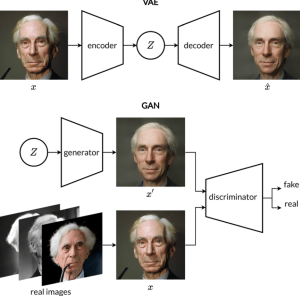
Are you curious about how machines not only learn from data but actually create it? Have you ever found yourself puzzled while trying to choose between Generative Adversarial Networks (GANs) and Variational Autoencoders (VAEs) for your project? Or, even trying to understand when to use GANs or VAEs? Well, you’re not alone! In this blog post, we’re going to learn about two key technologies GANs vs VAEs in the generative modeling, comparing their strengths, weaknesses, and everything in between. We will dive into real-life scenarios, showing when you might want to pull out GANs to generate high-quality, realistic images, and when you’d prefer the control that VAEs provide over the …
ChatGPT Prompts Design Tips & Examples
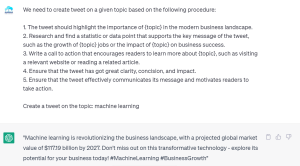
Are you looking to unlock the full potential of ChatGPT? Do you want to learn how to design & create engaging and effective prompts that can help you generate high-quality responses? Look no further! In this blog, we’ll share some expert tips and examples on how to design ChatGPT prompts that get the most out of this powerful language model. As one of the most advanced large language models available today, ChatGPT has the ability to generate informative and engaging responses. But the key is to provide clear instructions and ask right questions if we want to get the best results. That’s where prompt design & engineering comes in. By …
Microsoft Designer: Transforming Design with AI

Are you looking for a hassle-free and smart way to make impressive designs without any graphic design expertise? Then Microsoft’s newly launched tool, Microsoft Designer, may just be the answer. The realm of digital design welcomes a new entrant that promises to revolutionize the way we create – Microsoft’s latest offering, Microsoft Designer. Drawing parallels with the popular tool Canva, Microsoft Designer is an innovative platform that brings effortless design capabilities to your fingertips. This user-friendly, AI-powered design platform caters to an extensive array of users, from entrepreneurs and marketers to educators and students, and even to social media enthusiasts. Whether you are a seasoned professional looking to expedite your …
How to Access GPT-4 using OpenAI Playground?

How good it would be if we could access GPT-4 using the OpenAI Playground and harness the groundbreaking advancements OpenAI has made in generating human-like text? OpenAI has revolutionized the field of natural language processing (NLP) with its large language models (such as different versions of GPT-3.5), and the release of GPT-4 has further pushed the boundaries of what’s achievable. In this blog post, we will guide you through a step-by-step process to access GPT-4 model using the OpenAI playground. Step 1: Visit the OpenAI Playground To get started, open your web browser and navigate to the OpenAI Playground website. The URL for the OpenAI Playground is https://playground.openai.com/. Step 2: …
Azure OpenAI Service Details & Pricing Info
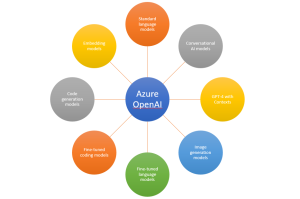
Azure OpenAI, an offering from Microsoft Azure, empowers developers, researchers, and enterprises with the transformative capabilities of Artificial Intelligence (AI). In this blog post, we explore Azure OpenAI’s service details and pricing information, providing you with insights to harness the immense power of AI. Azure OpenAI Services Information Azure OpenAI service provides a range of large language models from standard machine learning models to fine-tuned ones for specific tasks. We can build intelligent chatbots, automate code generation, or enhance natural language understanding. We can leverage conversational AI models for interactive virtual assistants that elevate user experiences and streamline operations. Image generation models can be used to produce stunning, realistic visuals. …
Google Unveils Next-Gen LLM, PaLM-2
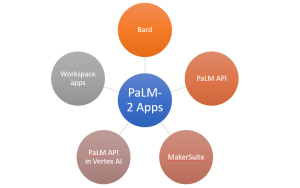
Google’s breakthrough research in machine learning and responsible AI has culminated in the development of their next-generation large language model (LLM), PaLM 2. This model represents a significant evolution in natural language processing (NLP) technology, with the capability to perform a broad array of advanced reasoning tasks, including code and math, text classification and question answering, language translation, and natural language generation. The unique combination of compute-optimal scaling, an improved dataset mixture, and model architecture enhancements is what powers PaLM 2’s exceptional capabilities. This combination allows the model to achieve superior performance than its predecessors, including the original PaLM, across all tasks. PaLM 2 was built with Google’s commitment to …
Generative AI Risks & Concerns: Examples
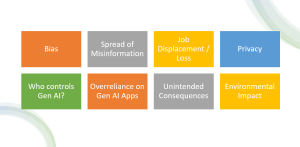
In the ever-evolving realm of artificial intelligence, generative AI has emerged as a groundbreaking technology, capable of producing incredibly realistic and creative content. From generating art and music to crafting compelling stories and even mimicking human conversations, the possibilities seem endless. Here is a sample representing AI generated talk between Bill Gates & Socrates. You can as well imagine about the endless possibilities. As with any powerful tool, there are risks and concerns related to generative AI that need to be addressed. In this blog, we will delve into the fascinating world of generative AI and explore some of the key concerns it brings forth. We will learn with some …
ChatGPT Cheat Sheet for Data Scientists
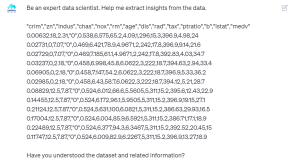
With the explosion of data being generated, data scientists are facing increased pressure to analyze and interpret large amounts of text data effectively. However, this can be a challenging task, especially when dealing with unstructured data. Additionally, data scientists often spend a significant amount of time manually generating text and answering complex questions, which can be a time-consuming process. Welcome ChatGPT! ChatGPT offer a powerful solution to these challenges. By learning different ChatGPT prompts, data scientists can significantly become super productive while generating relevant insights, answer complex questions, and perform machine learning tasks with ease such as data preprocessing, hypothesis testing, training models, etc. In this blog, I will provide …
How does Dall-E 2 Work? Concepts, Examples
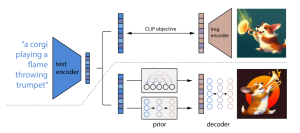
Have you ever wondered how generative AI is converting words into images? Or how generative AI models create a picture of something you’ve only described in words? Creating high-quality images from textual descriptions has long been a challenge for artificial intelligence (AI) researchers. That’s where DALL-E and DALL-E 2 comes in. In this blog, we will look into the details related to Dall-E 2. Developed by OpenAI, DALL-E 2 is a cutting-edge AI model that can generate highly realistic images from textual descriptions. So how does DALL-E 2 work, and what makes it so special? In this blog post, we’ll explore the key concepts and techniques behind DALL-E 2, including …
ChatGPT Prompt to get Datasets for Machine Learning
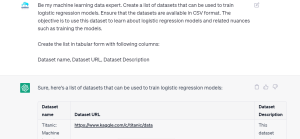
As the field of machine learning continues to expand, having access to high-quality datasets has become increasingly important. Datasets are the foundation of any machine learning project and play a crucial role in determining the accuracy and effectiveness of the resulting model. In this blog post, we will learn about a template ChatGPT prompt that can be used to gather a variety of datasets for different types of machine learning tasks. As data scientists As data scientists, it is recommended that we use a systematic approach to identify and select the right dataset for our machine learning project. This involves considering the specific requirements of our project, such as the …
ChatGPT for Data Science Projects – Examples
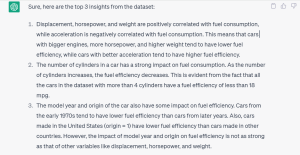
Data science is all about turning raw data into actionable insights and outcomes that drive value for your organization. But as any data science professional knows, coming up with new, innovative ideas for your projects is only half the battle. The real challenge is finding a way to turn those ideas into results that can be used to drive business success by doing proper data analysis and building machine learning models using most appropriate algorithms. Unfortunately, many data science professionals struggle with this second step, which can lead to frustration, wasted time and resources, and missed opportunities. That’s where ChatGPT comes in. As a language model trained by OpenAI, ChatGPT …
NLP: Huggingface Transformers Code Examples

Do you want to build cutting-edge NLP models? Have you heard of Huggingface Transformers? Huggingface Transformers is a popular open-source library for NLP, which provides pre-trained machine learning models and tools to build custom NLP models. These models are based on Transformers architecture, which has revolutionized the field of NLP by enabling state-of-the-art performance on a range of NLP tasks. In this blog post, I will provide Python code examples for using Huggingface Transformers for various NLP tasks such as text classification (sentiment analysis), named entity recognition, question answering, text summarization, and text generation. I used Google Colab for testing my code. Before getting started, get set up with transformers …
Andrew Ng & OpenAI ChatGPT Prompt Engineering Course
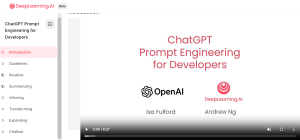
Renowned artificial intelligence (AI) experts, Andrew Ng from DeepLearning.ai and Isa Fulford from OpenAI, have teamed up to offer an exciting new course on prompt engineering, titled “ChatGPT Prompt Engineering for Developers“. The course, which is completely free, aims to help developers better understand the prompts design and implementation for various use cases. The ChatGPT Prompt Engineering course is specifically tailored for developers including data scientists who wish to learn more about designing prompts for different tasks including software development (coding), marketing, creating product reviews & description, writing essay, summarizing text etc. It includes several important topics such as summarizing, inferring, transforming, expanding and chatbot building. These skills are essential …
ChatGPT Prompts for Focused Learning

Have you ever felt frustrated with the limited time you have to learn and understand key concepts or topics in your desired field in a focused manner? Do you feel lost with the technical terms and jargon used in the desired field? ChatGPT’s prompts can help you overcome these obstacles and make learning more efficient and effective. By leveraging the power of natural language processing and machine learning, ChatGPT provides you with personalized learning opportunities that cater to your specific needs and learning goals. Through this blog, we will explore a list of ChatGPT prompts which can help you learn about any topics in your desired field of interest in …
ChatGPT Prompt for Job Interview Preparation
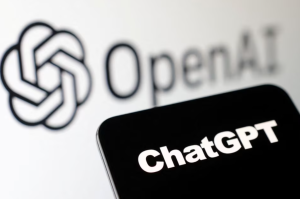
Preparing for a job interview can be a nerve-wracking experience. It’s natural to feel a sense of pressure as you try to impress your potential employer and secure the job you’ve been dreaming of. However, with the right preparation, you can increase your chances of acing the interview and landing the job. That’s where ChatGPT comes in. As a powerful language model trained by OpenAI, ChatGPT is equipped with the knowledge and expertise to provide you with valuable insights and prompts to help you prepare for your job interview. In this blog, we’ll explore some of the ways that ChatGPT can assist you in your job interview preparation. Whether you’re …

I found it very helpful. However the differences are not too understandable for me